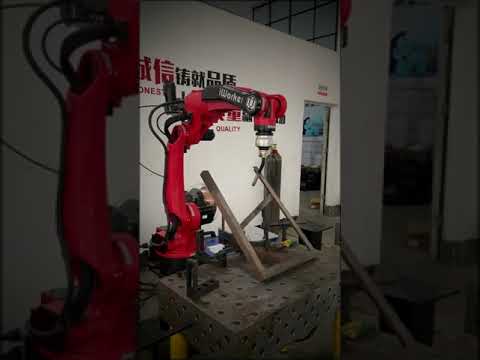Industrial Robots Applications: Advancing the Efficiency and Precision of Manufacturing
Introduction
The integration of industrial robots into manufacturing processes has revolutionized the industry by enhancing efficiency, accuracy, and productivity. With the continuous advancements in technology, robotic welding, CNC machine loading and unloading applications, and various other automated solutions have become essential components of modern factories. In this article, we will explore the wide-ranging applications of industrial robots and how they have transformed manufacturing.
Robotic Welding: Enhancing Speed and Precision
One of the most prominent applications of industrial robots is in the field of welding. Traditional welding methods often require skilled human operators who meticulously perform the process. However, the introduction of robotic welding has drastically changed the game.
Industrial robots equipped with advanced sensors and programming capabilities can now execute welding tasks with exceptional speed and precision. These robots can consistently deliver high-quality welds, eliminating the variations that often occur with human operators. Additionally, they can withstand long hours of operation without compromising the quality of the welds.
CNC Machine Loading and Unloading: Improving Efficiency
Another noteworthy application of industrial robots lies in the domain of CNC machine loading and unloading. CNC machines are essential in modern manufacturing, capable of producing intricate and precise parts. However, the manual loading and unloading process can be time-consuming and prone to errors.
By implementing industrial robots for this task, manufacturers can significantly enhance the efficiency and accuracy of their operations. These robots efficiently handle the repetitive task of loading and unloading raw materials and finished products, allowing human operators to focus on other critical aspects of the production process. This automation not only increases productivity but also reduces the risk of human error, resulting in improved overall quality.
Articulated Robots: Flexibility in Applications
Articulated robots, known for their versatility, have found their applications in various industries. Commonly used for tasks such as material handling, assembly, and even painting, these robots provide manufacturers with a level of flexibility that was once unimaginable.
The low-cost high-quality robotic arm manipulator, such as the CNC Robot Arm for welding, painting, and other applications, has gained significant attention in recent years. These robots combine affordability with advanced capabilities, making them an attractive option for small to medium-sized enterprises (SMEs). With their ability to adapt and perform multiple tasks accurately, articulated robots have become invaluable assets in the manufacturing environment.
Cost-Effectiveness and ROI
Implementing industrial robots in manufacturing processes may entail significant upfront investments. However, the long-term benefits far outweigh the initial costs. The increased efficiency and productivity achieved through automation lead to higher production outputs and reduced labor requirements. Moreover, the elimination of human error minimizes the likelihood of faulty products, reducing waste and associated costs.
Furthermore, with the continuous advancements in robotics technology, the prices of industrial robots are decreasing, making them more accessible to a wider range of businesses. This affordability, combined with the significant return on investment (ROI) that comes with automation, makes the integration of industrial robots a favorable choice for many manufacturers.
Conclusion
Industrial robots have become indispensable in modern manufacturing, enabling businesses to enhance efficiency, accuracy, and productivity while reducing costs. Robotic welding, CNC machine loading and unloading applications, and articulated robots have proven their worth by revolutionizing the industry and transforming traditional processes.
As the applications of industrial robots continue to expand, manufacturers need to embrace this revolution to stay competitive in the evolving market. By integrating industrial robots into their operations, businesses can unlock unprecedented levels of efficiency, precision, and cost-effectiveness.
References:
– Low Cost High-Quality Robotic Arm Manipulator. Retrieved from [URL]
– Articulated Robots for Welding, Painting, and More. Retrieved from [URL]
Industrial Robot
“Efficient and Precise Robotic Arm for Diverse Industrial Applications: Welding, Painting, CNC, and More!”


